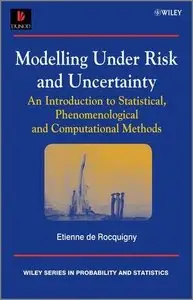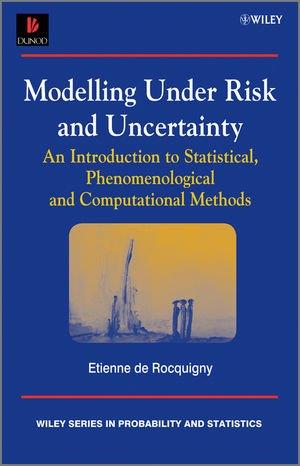Modelling Under Risk and Uncertainty: An Introduction to Statistical, Phenomenological and Computational Methods By Etienne de Rocquigny
2012 | 477 Pages | ISBN: 0470695145 | PDF | 4 MB
2012 | 477 Pages | ISBN: 0470695145 | PDF | 4 MB
Modelling has permeated virtually all areas of industrial, environmental, economic, bio-medical or civil engineering: yet the use of models for decision-making raises a number of issues to which this book is dedicated: How uncertain is my model ? Is it truly valuable to support decision-making ? What kind of decision can be truly supported and how can I handle residual uncertainty ? How much refined should the mathematical description be, given the true data limitations ? Could the uncertainty be reduced through more data, increased modeling investment or computational budget ? Should it be reduced now or later ? How robust is the analysis or the computational methods involved ? Should / could those methods be more robust ? Does it make sense to handle uncertainty, risk, lack of knowledge, variability or errors altogether ? How reasonable is the choice of probabilistic modeling for rare events ? How rare are the events to be considered ? How far does it make sense to handle extreme events and elaborate confidence figures ? Can I take advantage of expert / phenomenological knowledge to tighten the probabilistic figures ? Are there connex domains that could provide models or inspiration for my problem ? Written by a leader at the crossroads of industry, academia and engineering, and based on decades of multi-disciplinary field experience, Modelling Under Risk and Uncertainty gives a self-consistent introduction to the methods involved by any type of modeling development acknowledging the inevitable uncertainty and associated risks. It goes beyond the “black-box” view that some analysts, modelers, risk experts or statisticians develop on the underlying phenomenology of the environmental or industrial processes, without valuing enough their physical properties and inner modelling potential nor challenging the practical plausibility of mathematical hypotheses; conversely it is also to attract environmental or engineering modellers to better handle model confidence issues through finer statistical and risk analysis material taking advantage of advanced scientific computing, to face new regulations departing from deterministic design or support robust decision-making. Analysts and researchers in numerical modeling, applied statistics, scientific computing, reliability, advanced engineering, natural risk or environmental science will benefit from this book.



